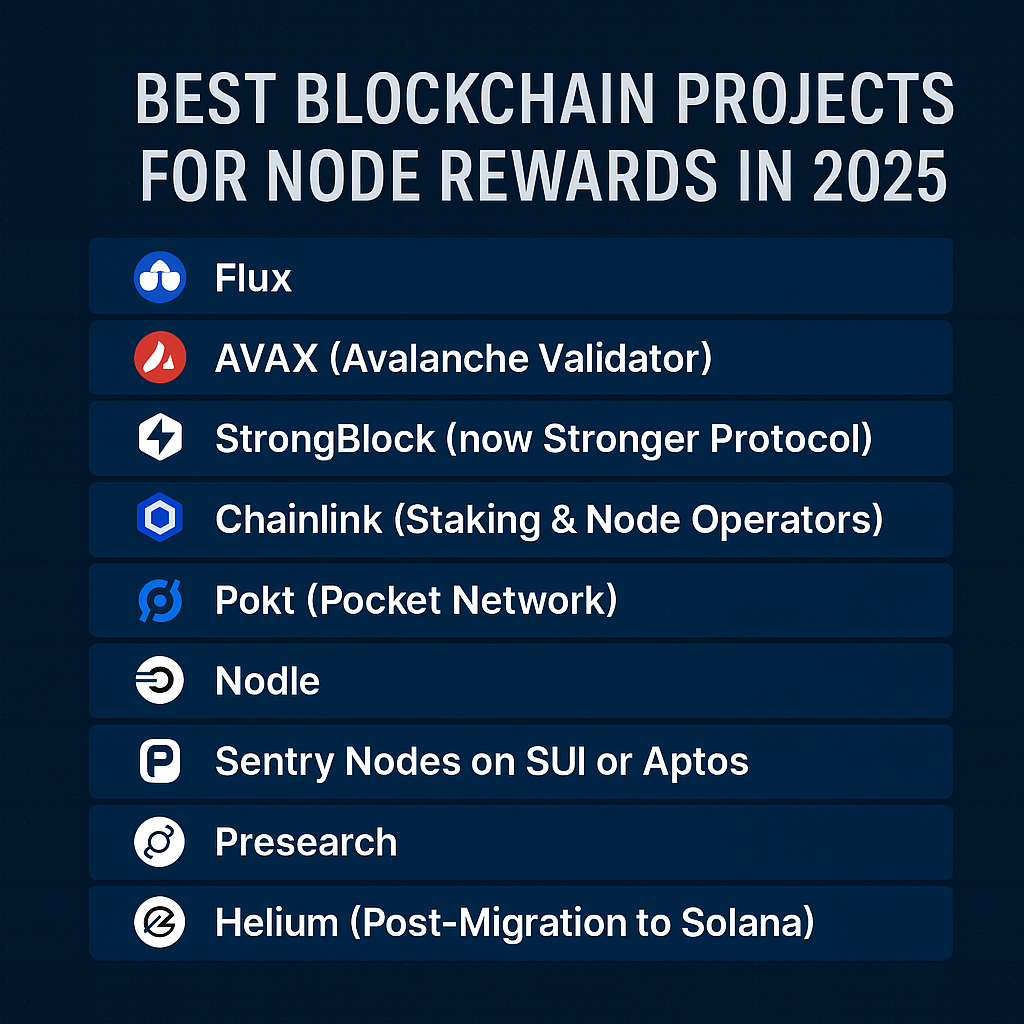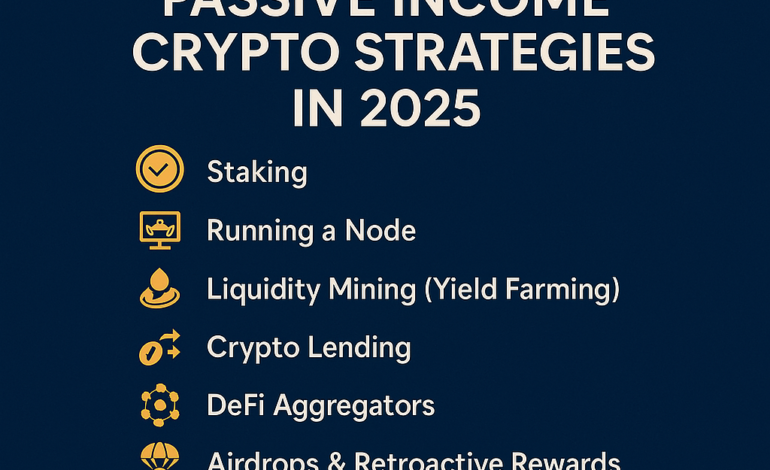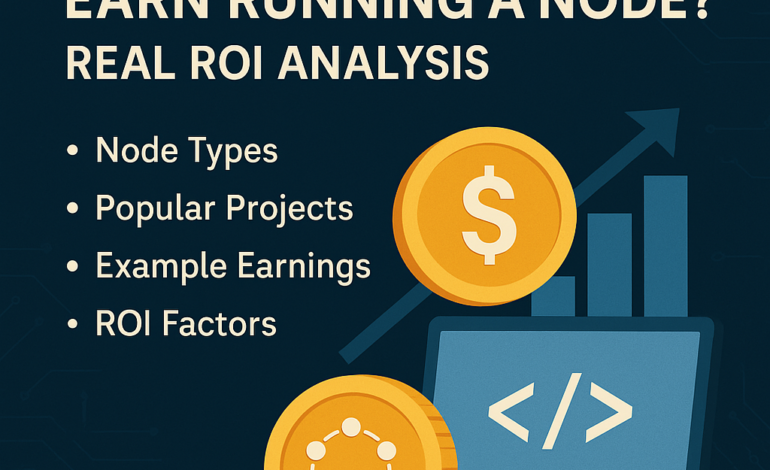With the rise of decentralized infrastructure and Web3 innovation, blockchain node operations have become one of the most powerful ways to earn passive income in the crypto space. In 2025, more projects are incentivizing users to run nodes—offering substantial rewards for helping secure and support their networks.

1. Flux
Flux continues to dominate the decentralized cloud infrastructure space. It rewards users for running Flux nodes, which help power decentralized applications (dApps), data storage, and Web3 services.
Node Types: Cumulus, Nimbus, Stratus
Estimated ROI: 10% – 25% annually
Requirements: Linux VPS, Flux tokens, 24/7 uptime
Why Flux? Real-world use cases and expanding ecosystem
2. AVAX (Avalanche Validator)
Avalanche remains a top-tier blockchain known for its speed and low fees. By running a validator node, you help secure the Avalanche network and earn staking rewards.
Minimum Stake: 2,000 AVAX
Lock Time: 2 weeks to 1 year
Rewards: ~9% APR
Why AVAX? Strong adoption, subnets, and institutional support
3. StrongBlock (now Stronger Protocol)
Despite its ups and downs, StrongBlock helped pioneer the idea of node-as-a-service (NaaS). It’s now evolving into the Stronger Protocol with new DeFi utility and tokenomics.
Node Cost: Previously ~10 STRONG per node
Rewards: Varies, often based on community updates
Why StrongBlock? Still one of the most recognized node reward brands
4. Chainlink (Staking & Node Operators)
Chainlink offers oracles that connect smart contracts with real-world data. Running a Chainlink node lets you contribute to this infrastructure while earning LINK tokens.
Requirements: Technical expertise, reliable uptime
Rewards: Based on data feed demand and usage
Why Chainlink? Trusted by major DeFi protocols and expanding into CCIP
5. Pokt (Pocket Network)
Pocket Network enables decentralized API access for blockchains. Running a node allows you to serve RPC traffic and earn POKT tokens.
Requirement: Node setup, bandwidth, token stake
Rewards: Based on API requests handled
Why Pocket? High utility and strong network activity
6. Nodle
Nodle powers IoT connectivity using smartphones as nodes. Their mobile-first approach allows almost anyone to earn crypto by contributing to their mesh network.
Node Type: Smartphone app
Rewards: Nodle Cash (NODL)
Why Nodle? Easy entry, low hardware cost, high scalability potential
7. Sentry Nodes on SUI or Aptos
These next-gen Layer 1 chains are exploring unique node reward programs for early supporters and contributors.
SUI & Aptos Node Rewards: Often given in the form of testnet incentives and airdrops
Why Consider Them? Early adoption can lead to large retroactive rewards
8. Presearch
Presearch is a decentralized search engine where users can run nodes to process search queries.
Rewards: PRE tokens for processing search traffic
Requirements: VPS and node installation
Why Presearch? Unique use case, real-world utility, privacy-focused
9. Helium (Post-Migration to Solana)
After its migration to Solana, Helium now offers more flexible options for node participation through Hotspots and 5G infrastructure.
Node Types: IoT & 5G Hotspots
Rewards: HNT tokens
Why Helium? Combines physical infrastructure with blockchain incentives
10. Edge Network
Edge allows users to earn crypto by providing decentralized storage, compute, and bandwidth services.
Node Setup: Lightweight, runs on laptops or Raspberry Pi
Rewards: EDGE tokens
Why Edge? Low barrier to entry, Web3-aligned infrastructure
Final Thoughts
Running a node isn’t just a technical role—it’s an investment in the future of decentralized infrastructure. In 2025, the best node-based blockchain projects are those that provide real utility, sustainable tokenomics, and growing ecosystems.
Whether you want to run a high-powered validator or a smartphone-based micro-node, there’s a project out there for you.
Pro Tip: Always research the token economy, hardware requirements, and community support before setting up a node.




